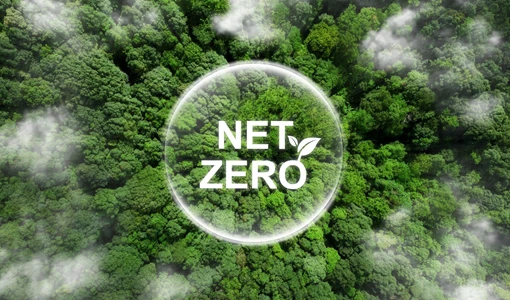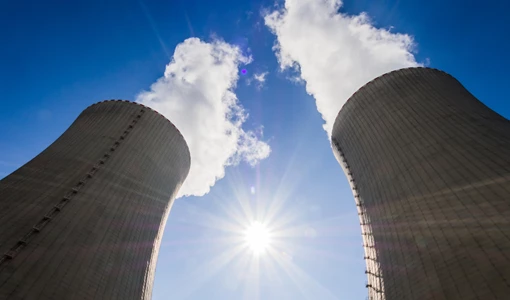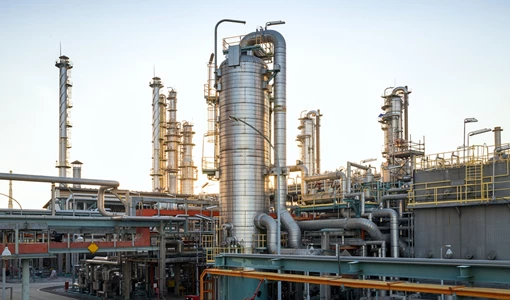For the transport sector, a work in progress not an end in itself
Producers and consumers need policy support that de-risks investment and allows them flexibility required for the energy transition, writes Matthias Olafsson, Chief EU Representative, The Methanol Institute.
The Fit for 55 package is a set of 13 proposals aimed at underpinning the bloc’s political pledge to cut greenhouse gas emissions by at least 55% in 2030 and attain carbon neutrality by 2050. Released in two batches in July and December 2021, key pieces of the Fit for 55 package have already been adopted by EU legislators and implementation or transposition into member state law is already underway.
This undertaking, in conjunction with the RepowerEU plan which will drastically accelerate the integration of renewable and low-carbon solutions in the EU, has forged a new reality for businesses from all sectors across the bloc and beyond. For the methanol sector in particular, these developments have paved the way for methanol’s faster integration into transport, with the combination of supply mandates and strong demand signals.
Where do we go from here?
It is true to say that large scale efforts have been taken to drive renewable fuel demand. The Renewable Energy Directive alone is set to deliver no less than 200 TWh demand for sustainable fuels across the EU27 in the next few years. With its sharply rising GHG reduction targets, FuelEU maritime is poised to deliver renewable methanol demand in the order of millions of tonnes as early as 2030.
However, strong demand signals may not be enough to bootstrap into existence new fuel industries and deliver significant volumes in the order of magnitude necessary to address a challenge as great as the energy transition of EU mobility.
Producers need policy support to scale their operations to deliver larger volumes to market sooner. Other regulatory frameworks must be adapted and new ones created to make sustainable fuel production and delivery easier, accelerating the pace at which the fuel supply chain can adapt to new demand segments.
Supporting sustainable fuel supply
As it happens, the European Union already has devised important policies aiming to improve its competitiveness in the light of recently emerging policy instruments pertaining to sustainable fuel production in the United States of America. However, both mechanisms currently being debated by EU legislators, the Net Zero Industry Act and the Hydrogen Bank, have important shortfalls.
The Net Zero Industry act defines which technology solutions should be counted as strategically important for the energy transition and thus eligible for funding schemes across the Member States. In the current proposal, fuel technologies are not mentioned specifically in the list of strategic net-zero technologies.
Carbon capture and utilization, an important circular economy component in abating emissions from multiple industries as well as the production of several sustainable chemicals and fuels, such as eMethanol, is also left out of the scheme.
CAPEX and OPEX funding are key issues for project developers in the segment and thus, it is pivotal they be mentioned in the context of the Net Zero Industry Act. The Hydrogen Bank initiative essentially provides subsidies for renewable hydrogen generation, which is another key component of eMethanol production. Such subsidies have the capacity to transform the business cases of project developers in the segment, de-risking investment in the nascent sector and create instrumental first mover incentive.
However, the total funding behind the mechanism is merely 10% of its counterpart in the US, the Inflation Reduction Act, approximately 3 billion EUR diminishing the impact of the initiative. Further, the Hydrogen bank misses an important opportunity to steer supply to hard-to-abate sectors, as it doesn’t set conditions for a share of the proposed offtake derived from the mechanism to be delivered to maritime transport. Allocating further resources to the Hydrogen bank would serve to drive supply of sustainable fuels in harmony with the Union’s objectives for the integration of such fuels.
Making sustainable fuel production and delivery easier
First, there are trivial factors of a technical nature which can be addressed immediately to facilitate sustainable fuel production. While the European Commission’s Directorate General for Mobility and Transport crafted effective policies to produce demand for sustainable fuels, their colleagues at the Directorate General for Energy and for Climate simultaneously made the same fuels very difficult to produce.
Among the more harmful outcomes from the recent legislative cycle is the Renewable Energy Directive’s Delegated act on GHG methodology for Renewable Fuels of Non-Biological Origin. The document prescribes a ban of the utilization of all captured carbon emission from ETS industries post 2041, removing the business case for fuel projects relying on such streams as their investment horizons certainly extend beyond the year 2041. The ban doesn’t appear to take into consideration how those same carbon emissions will be abated though, if not captured, re-used and repurposed.
The ban comes without an impact assessment and without any distinction between CO2 sources that may be considered non-abatable. A complete reassessment of which carbon sources are considered eligible for re-use for fuel production is needed to effectively facilitate the uptake of renewable fuels relying on carbon capture for their production.
Released at the same time, a Delegated Act to the same Directive makes it very unclear how fuels imported to the EU could possibly be eligible to count towards EU transport targets. Despite issuing guidelines on the matter this summer, the European Commission has yet to answer the question on how imported eFuels will be treated, which effectively has impeded the development of fuel projects across the world targeting the EU for its offtake.
Another factor worth pointing out is the Union Database for biofuels currently under development by the European Commission, which does not account for biogas from gas grids to comply as feedstock for production of advanced biofuels under EU law. If enacted in this manner, biomethanol producers would be limited to sourcing biogas within the EU only, limiting feedstock availability and the corresponding supply significantly.
Second, there are important mechanisms which Member states can include in their national climate targets to facilitate fuel production and delivery. Most important would be to abandon the requirement for physical transport of fuel products for a less onerous chain of custody mechanism, where a fuel producer could book the sustainability attributes of their product into a distribution system which could then be claimed at another location by the consumer. This is already the case for electrical power procurement across the EU.
Another would be to include infrastructure deployment targets for alternative fuels in ports, addressing that pivotal part of the value chain. Bunker capacity in ports is pivotal to alternative fuel integration but vessel owners have limited power over which fuels will be available for bunkering at different ports. Government needs to play a role in adapting port infrastructure to reflect the properties of alternative fuels, which in the case of methanol would mean converting existing methanol storage terminals for bunkering, investment in new berth for larger barges with higher throughput to adjust for variances in energy density and enable segregated storage.
Conclusion
The Methanol Institute is engaged in lobbying lawmakers and policy professionals across the EU with the aim of promoting the conditions that will encourage producers to invest in production in the long term. It would also send an important signal to consumers that the EU is not just serious about reducing emissions but has a flexible approach to their implementation.
The scale of the challenge presented by the energy transition across a bloc of the size and diversity of the EU is chastening enough. To make the transition successfully requires we use every opportunity available to encourage production and consumption in equal measure, giving both sides the confidence that policymakers are aligned with the industries which will ultimately have the task of making it a reality.
KEEPING THE ENERGY INDUSTRY CONNECTED
Subscribe to our newsletter and get the best of Energy Connects directly to your inbox each week.
By subscribing, you agree to the processing of your personal data by dmg events as described in the Privacy Policy.

CSIS: long-term LNG demand to reshape global export capacity growth
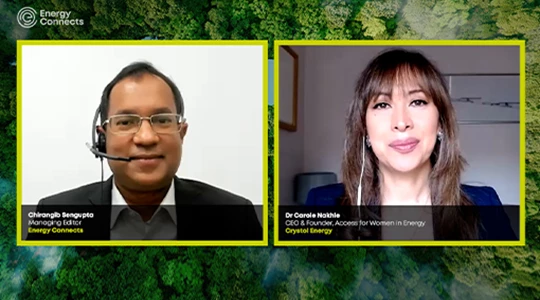
More women in energy vital to the industry’s success
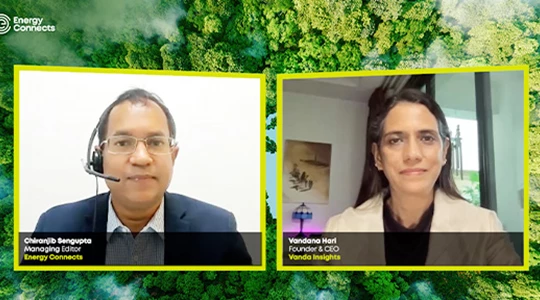
India’s energy sector presents lucrative opportunities for global companies
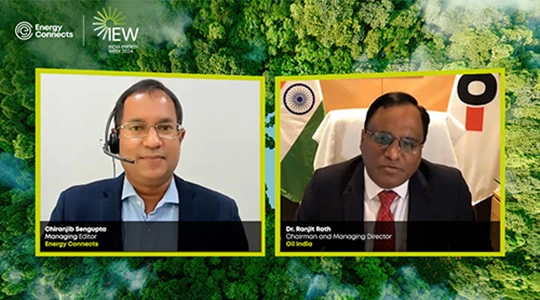
Oil India charts the course to ambitious energy growth

Maritime sector is stepping up to the challenges of decarbonisation
Partner content

Navigating the trading seas: exploring the significance of benchmarks

Back to the Future(s): the best commodities benchmarks are still physically settled

Ebara Elliott Energy offers a range of products for a sustainable energy economy
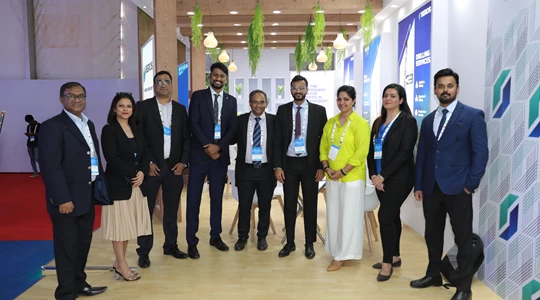
Essar outlines how its CBM contribution is bolstering for India’s energy landscape



